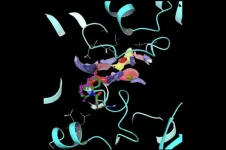(Press-News.org) Quantum computers, which can solve several complex problems exponentially faster than classical computers, are expected to improve artificial intelligence (AI) applications deployed in devices like autonomous vehicles; however, just like their predecessors, quantum computers are vulnerable to adversarial attacks.
A team of University of Texas at Dallas researchers and an industry collaborator have developed an approach to give quantum computers an extra layer of protection against such attacks. Their solution, Quantum Noise Injection for Adversarial Defense (QNAD), counteracts the impact of attacks designed to disrupt inference — AI’s ability to make decisions or solve tasks. The team will present research that demonstrates the method at the IEEE International Symposium on Hardware Oriented Security and Trust on May 6-9 in Washington, D.C.
“Adversarial attacks designed to disrupt AI inference have the potential for serious consequences,” said Dr. Kanad Basu, assistant professor of electrical and computer engineering in the Erik Jonsson School of Engineering and Computer Science. “An attack can be likened to someone putting a sticker over a stop sign: An autonomous vehicle may not recognize the stop sign properly, interpreting it as a reduced speed sign and hence, fail to stop. Our goal with this approach is to make quantum computer applications more secure.”
Quantum computing is a rapidly emerging technology that uses quantum mechanics — the study of how particles behave at the subatomic level — to solve complex computational problems.
Like bits in traditional computers, qubits represent the fundamental unit of information in quantum computers. Bits in classical computers represent 1 or 0. Qubits, however, take advantage of the principle of superposition, which means they can simultaneously be in a state of 0 and 1; therefore, qubits can represent two states, resulting in dramatic speedup capabilities compared to traditional computers. As an example, due to their computing power, quantum computers have the potential to break highly secure encryption systems.
One of the challenges of quantum computers is their susceptibility to “noise,” or interference, due to factors including temperature fluctuations, magnetic fields or imperfections in hardware components. Quantum computers also are prone to “crosstalk,” or unintended interactions between qubits. Noise and crosstalk can result in computing errors.
The researchers’ approach leverages intrinsic quantum noise and crosstalk to counteract adversarial attacks. The method introduces crosstalk into the quantum neural network (QNN), a form of machine learning in which large datasets train computers to perform tasks, including detecting objects such as stop signs or other computer vision responsibilities.
“The noisy behavior of quantum computers actually reduces the impact of attacks,” said Basu, who is senior author of the study. “We believe this is a first-of-its-kind approach that can supplement other defenses against adversarial attacks.”
The researchers demonstrated that, during an attack, an AI application was 268% more accurate with QNAD than without it.
Shamik Kundu, a computer engineering doctoral student and a first co-author, said the approach is designed to supplement other techniques to protect quantum computer security. Kundu likened the framework’s benefit to that of seat belts in cars.
“In case of a crash, if we do not wear the seat belt, the impact of the accident is much greater,” Kundu said. “On the other hand, if we wear the seat belt, even if there is an accident, the impact of the crash is lessened. The QNAD framework operates akin to a seat belt, diminishing the impact of adversarial attacks, which symbolize the accident, for a QNN model.”
Other study authors include computer engineering doctoral students Navnil Choudhury, who is also a first author, and Sanjay Das. Also collaborating was Dr. Arnab Raha, a senior research scientist at Intel Corp.
The research was funded by the National Science Foundation.
END
Researchers’ approach may protect quantum computers from attacks
2024-03-08
ELSE PRESS RELEASES FROM THIS DATE:
Rogue enzymes cause numerous diseases. A new method could help design drugs to treat them.
2024-03-08
Helicases are enzymes that unwind DNA and RNA. They’re central to cellular life, implicated in a number of cancers and infections—and, alas, extraordinarily difficult to target with drugs.
Now, new research provides a powerful platform for designing covalent inhibitors tailored to target helicases. The paper, published in the Journal of the American Chemical Society, describes how researchers used this innovative new platform to design molecules that take aim at helicases involved in COVID and certain cancers.
“High-resolution structural and biochemical data alone are not sufficient ...
Study shows how oestrogen protects against fatty liver
2024-03-08
New research from Karolinska Institutet in Sweden shows how oestrogen protects against MASLD, a fatty liver disease that has increased dramatically during the current obesity epidemic. The study, published in Molecular Systems Biology, shows how a new drug under development could become a future treatment for fatty liver disease and liver cancer.
The global obesity epidemic has resulted in a dramatic increase in fatty liver, a disease in which fat that does not fit into fat cells is stored in liver cells instead.
Since last year, fatty liver due to obesity (and not excessive alcohol consumption) is known as MASLD (metabolic dysfunction-associated steatotic liver disease). ...
Limited correlation between canine lymphoma and proximity to environmental toxins in new study
2024-03-08
DENVER/March 8, 2024 – As awareness of the health risks associated with radon and fracking exposure in connection to cancer continues to rise in human medicine, a recent study explored these ties with multicentric lymphoma, a prevalent canine cancer. Surprisingly, the study did not identify significant correlations between living near sources of environmental toxins, such as fracking by-products and radon, and dogs diagnosed with lymphoma.
The results of this study were published on Monday using data from Morris Animal Foundation’s Golden Retriever Lifetime Study, which enrolled dogs with multicentric lymphoma and matched unaffected ...
Bald eagles eat prairie dogs? Researchers underscore relationship between raptors and rodents in the southern plains
2024-03-08
We all know that bald eagles like fish. Few of us, however, picture them soaring over grasslands seeking out prairie dog snacks. In a new paper from the Journal of Raptor Research, lead author Courtney Duchardt and coauthors make the case that prairie dogs are an important resource for at least four species of raptors overwintering in the Southern Great Plains, bald eagles included. Their paper, titled “Overwintering Raptor Abundance and Community Composition in Relation to Prairie Dog Colonies in the Southern Great Plains,” explains the first broad scale look into the relationship between prairie dogs and their aerial predators, and illuminates ...
Facing illegal wildlife trade in the European union: A call for comprehensive measures
2024-03-08
New paper now published in Science proposes three measures the European Union should implement to improve open information, legality and sustainability of wildlife trade in the region.
Wildlife trade affects all kinds of species, from insects and fungi to large plants and mammals. The global trade of numerous species poses a significant threat to their survival, increasing their risk of extinction. The European Union is a major global hub for the illegal and unsustainable trade of those species whose international trade is not regulated by the Convention on International Trade in Endangered ...
A better handle on the emissions budget for the Paris climate targets
2024-03-08
A team of scientists from the University of Exeter, Met Office and Imperial College have found a new way to calculate the total carbon emissions consistent with the Paris climate targets of 1.5oC and 2oC of global warming.
Although the exceptionally warm climate in 2023 was close to exceeding the 1.5oC level, the Paris targets relate to the average warming over ten or more years.
The new study answers the question: how much carbon have we got left before we pass the Paris limits?
About 15 years ago, climate scientists discovered a remarkably useful fact about climate change.
Despite the vast complexity ...
High cholesterol was twice as prevalent among American Indian teens and young adults
2024-03-08
Research Highlights:
A study of more than 1,400 people in U.S. tribal communities found that high cholesterol was twice as prevalent among American Indian adolescents and young adults compared to the overall U.S. population.
The study also noted that few study participants with high cholesterol sought or received treatment during the study period.
DALLAS, March 8, 2024 — Young American Indians, ages 15-39, had cholesterol levels more than two times higher than the general U.S. population, according to new research published in the Journal of the American Heart Association, an open access, peer-reviewed journal of the American ...
Good news for coral reef restoration efforts: Study finds “full recovery” of reef growth within four years
2024-03-08
While the majority of the world’s reefs are now under threat or even damaged potentially beyond repair, a new study reported in the journal Current Biology on March 8 offers some encouraging news: efforts to restore coral reefs not only increase coral cover, but they can also bring back important ecosystem functions, and surprisingly fast.
“We found that restored coral reefs can grow at the same speed as healthy coral reefs just four years after coral transplantation,” says Ines Lange (@InesLange9) of University of Exeter, UK. “This means that they provide lots of habitat for ...
Balancing training data and human knowledge makes AI act more like a scientist
2024-03-08
When you teach a child how to solve puzzles, you can either let them figure it out through trial and error, or you can guide them with some basic rules and tips. Similarly, incorporating rules and tips into AI training—such as the laws of physics—could make them more efficient and more reflective of the real world. However, helping the AI assess the value of different rules can be a tricky task.
Researchers report March 8 in the journal Nexus that they have developed a framework for assessing the ...
Restored coral reefs can grow as fast as healthy reefs
2024-03-08
Planting new coral in degraded reefs can lead to rapid recovery – with restored reefs growing as fast as healthy reefs after just four years, new research shows.
Reefs worldwide are severely threatened by local and global pressures. In Indonesia, where the study was carried out, destructive blast fishing destroyed large reef areas 30-40 years ago – with no signs of recovery until now.
The Mars Coral Reef Restoration Programme attempts to restore degraded reefs by transplanting coral fragments onto a network of interconnected ...








